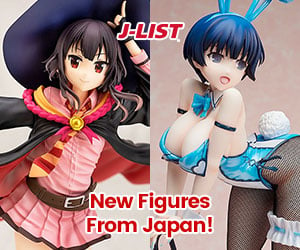There’s a perception that the Japanese are more conformist than people in Europe or the States. Leaving aside the question of whether someone who is into a form of “indies” subculture is in fact just choosing a more specialized group to conform to or not (no matter what country you’re from), I will say that there are times when I’ve felt that the Japanese choose the comfortable path of doing what everyone else is doing a little more than we might back home. Some of the sillier fashion trends to come along here, like the 8″ thick sneaker soles or the “pair look” boom of the late 80s (when every couple would dress in matching outfits while on a date) would not have happened without the pressure on people to follow the larger group. When I came to Japan in 1991, the idea of a Japanese person owning a piece of “used” clothing was unthinkable, but a few years later, the rise of a trend called ame-kaji (that’s “American Casual” in case you were wondering) caused the used clothing market to take off — and suddenly all the Japanese were wearing faded jeans that had belonged to American college students a few weeks before. For the past week I’ve been engaging in a little “conformity experiment” of my own, using a Bluetooth headset to talk to people on my cell phone — something that’s not done in Japan at all. I’ve been having fun, talking to “myself” while Japanese people gasp at me as they walk past, not realizing I’m on the phone. I’m feeling a lot of pressure to give in and hold my phone to my ear like everyone else, but I’ll stick it out a few more weeks and see if I can’t learn something more about human nature from it all.
Every country has a unique relationship with its own past as expressed in history and literature. In English, we all have to read the classics like Beowulf (written in Old English), the Canterbury Tales (Middle English), and of course plenty of Shakespeare (which is Modern English, even though some 11th graders struggling through Macbeth might not agree). Japanese students have to undertake the same studies, wading through famous works of Classical Japanese that are far removed from the language of modern-day Japan. Kanji entered the country along with Buddhism in the 8th century, and it was the first writing system the Japanese had ever known — the mound-builders of past ages had no way to write down their history. Early Japanese works like the Kojiki, the first record of Japan’s history, were written in kanbun, an archaic form of writing that assigned Japanese readings to written kanji. The Heian Period saw the creation of hiragana, a syllable-based writing system derived from kanji, and Murasaki Shikibu used it to pen the Tale of Genji, considered to be the world’s first novel — it’s about as hard to read as Chaucer is for English speakers (i.e., really hard). To help bridge the gap and make the literature of the past more accessible, it’s common for the stories to be recreated as educational manga, which can capture and hold the interest of young people much more effectively. The question of when Japanese entered its “modern” linguistic phase is a little dicey, but one answer might be the Meiji Restoration of 1868, when Japan started modernizing and introducing compulsory education. Still, I find that trying to read a Japanese newspaper from the World War II era is extremely difficult — even just 60 years ago, the language had yet to be standardized officially, meaning that text might be printed horizontally from right to left rather than the more common left to write, and archaic versions of kanji were used randomly here and there, making it all very hard to read.
It seems that a Japanese city can’t be complete until it has a big tower for tourists to visit and take pictures of. Virtually every major Japanese city has a big tower in its midst, to serve as a popular spot for visitors and couples out for a romantic late-night drive. Kyoto Tower resembles Seattle’s Space Needle. Marine Tower in Yokohama was the largest lighthouse in the world when it was built in 1961. Osaka Tower was built in 1887, but was melted down to make tanks during World War II, and rebuilt it in the 1950’s. But the most famous tower in Japan is Tokyo Tower, a 333 meter replica of the Eiffel Tower, built because the Japanese secretly wish they were part of Europe rather than Asia. An attractive icon located near Roppongi, Tokyo Tower serves many purposes, including being a popular tourist destination and “date spot,” housing an aquarium underground, and broadcasting television and radio signals to Tokyo residents. Now it looks like there’ll be a new tower on the block, amazingly to be called New Tokyo Tower, a massive 600 meter ziggurat that will blanket the Tokyo area with even more radio, television, and cell phone waves. Among its benefits will be enabling “Wanseg” (“1-Seg”), a new application of terrestrial digital broadcasting that will allow people to receive crystal clear TV on cell phones, laptops, or in their cars.
Fans of Kit Kat, we’re got great news for you: a cool Spring Sampler Pack of Japanese Kit Kat that includes all the delicious flavors available this year, including the delicious Green Tea Kit Kat, Strawberry Kit Kat, French Bretagne Milk, and original Kit Kat by Nestle. Stock is limited so hurry! (Remember, we remove all chocolate items from the site during the summer months because of the high humidity in Japan.)















